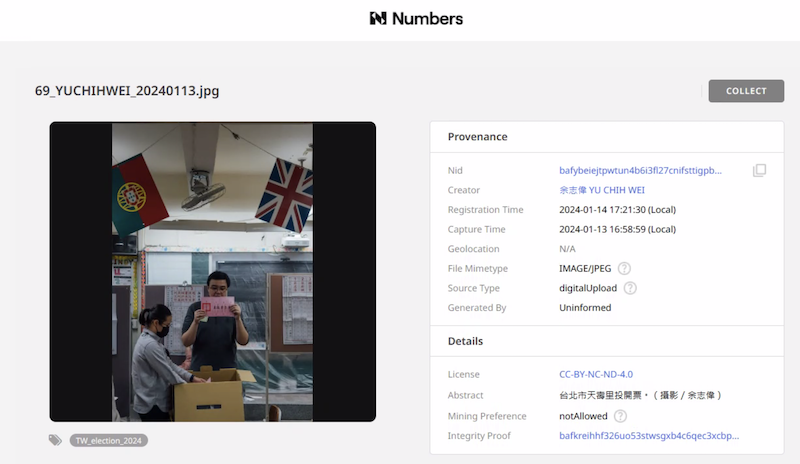New blockchain verification tool to help fight the use of deep fakes in elections
As fears around synthetic content rise, this new AI-powered tech allows newsrooms establish the authenticity of digital images and videos



As fears around synthetic content rise, this new AI-powered tech allows newsrooms establish the authenticity of digital images and videos


This article was migrated from an old version of our website in 2025. As a result, it might have some low-quality images or non-functioning links - if there's any issues you'd like to see fixed, get in touch with us at info@journalism.co.uk.
One of the biggest anxieties triggered by the rise of generative AI is its potential to be abused to create online misinformation quickly and cheaply. This prospect is even more chilling as more than four billion people will be heading to the polls this year.
These fears are not unfounded. We saw examples of deep fakes - media that have been digitally altered to create fake events - used in elections in Slovakia, Taiwan and Bangladesh.
Governments worldwide are lagging in regulating deep fakes - also called synthetic media - so journalists and tech firms took the matter into their own hands.
One company that is looking to help newsrooms tackle the onslaught of deep fake imagery is Taiwan-based Numbers Protocol. It developed a tool that embeds metadata into a photo, which helps establish where it came from, when it was shot and, ideally, information about the author. This is underpinned by blockchain technology, which allows viewers to see the photo’s complete history, including any alterations.
Read more: Why do journalists need to care about blockchain?
Numbers Protocol works with photographers affiliated with news organisations and agencies worldwide, enabling them to upload their pictures with metadata that can be checked out by anyone on a public database.

Here is how it works. Photojournalists use a desktop tool to upload and manage photos and videos they took with professional cameras. These media files are stored on decentralised storage and registered on the blockchain, ensuring content integrity and ownership.
The tech is also available to non-professionals through a special app they can use to take pictures. The app automatically embeds information about the provenance of the picture, allowing media organisations to swiftly verify user-generated content.
Read more: Reuters tests new blockchain tool to authenticate images
To make verification easier and quicker, the service also includes a "Verify" engine powered by AI, which allows users to check the authenticity of content. Users can upload a photo to this engine - a bit like Google reverse image search - which then uses blockchain technology to verify its provenance.
"The challenge we face in Taiwan is very similar to the rest of the world," says Tammy Yang, founder of Numbers Protocol.
"The biggest challenge is information overwhelm. People are very protective of their belief systems and wary of anything new because it could be fake."
Although this tool cannot solve the use of deep fake content on its own, helping to establish the origin of an image or video is a good start. It also speeds up the debunking process - and time is often of essence when harmful disinformation goes viral.
In the run-up to the January election in Taiwan, Numbers Protocol collected around 1,000 photos that could be verified by anyone. This shows the potential of this tech for even larger-scale elections where deepfakes may influence the votes.